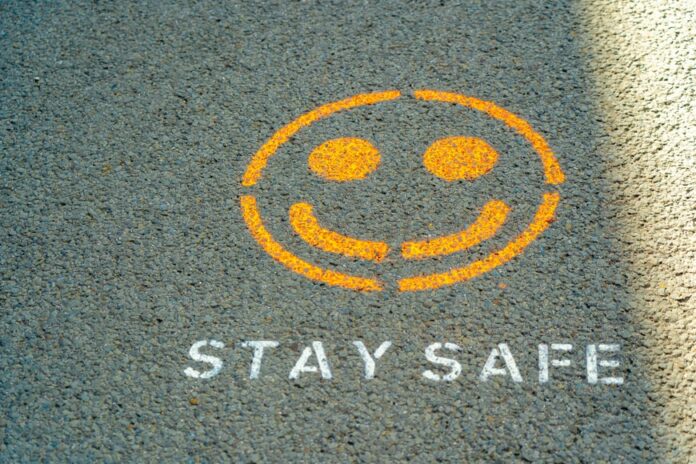
Accidents happen all the time, whether it’s through our own fault or caused by external factors that are beyond our control. Unfortunately, workplace environments are no strangers to these types of events. Statistics show that in 2018 there were over 3000 fatal accidents at work registered in the European Union. A study by ILO also reveals that approximately 2.3 million people around the world die every year as a result of work-related accidents or diseases.
These figures prove that work accidents are not just a common occurrence, but they can also have devastating consequences. Obviously, certain industries and occupations such as construction, agriculture, or manufacturing pose higher safety risks, therefore the prevalence of accidents in these sectors is also higher. But this doesn’t mean that people working in office environments are exempt from the risk of accidents.
There’s only so much that employers can do to avoid these unfortunate events from happening. The safety policies they set in place can protect employees and staff members to a certain extent, but they cannot eliminate risks and hazards altogether. That’s why it’s also the employee’s responsibility to make sure he stays safe while at work. This guide will provide you with some of the most important steps you should take to protect yourself against work accidents.
Comply with the safety policies and procedures established by your employer
The safety measures and policies set in place by your employer exist for a reason: to keep you end everyone else on the premises out of harm’s way and avoid work accidents from happening in the first place. Therefore, you should pay close attention when these policies and procedures are being explained.
These policies have been devised by experts in the field who know exactly what steps you should follow in order to minimize the risk of accidents and ensure safety in your work environment. While some of the procedures might seem obvious to you, others might come as a novelty, so make sure you don’t skip any information and comply with all the safety rules at all times.
Report risks and hazards as soon as possible
If you happen to notice any unsafe conditions or witness a dangerous situation, don’t ignore them and continue your activity as if nothing happened. What might seem to you like a minor issue, such as a wet floor with no sign to warn about it, can turn into a major disaster if left unaddressed.
Since no safety policy is completely flawless, there’s always the possibility that your employer might have overlooked certain health and safety risks, so reporting hazards as soon as you notice them will not only help keep everyone safe but can also lead to the improvement of current safety producers.
If an accident does happen, the management should be informed about it immediately. In case you get injured at work and it was someone else’s fault you can claim work injury compensation. The purpose of compensation in these situations is to put the claimant back in the position he was in prior to the accident and cover the damages and loss they’ve suffered as a result of it.
Wear adequate clothing and safety equipment as required
When entering a work environment, you should make sure that you wear adequate clothing and the personal protective equipment or PPE required to perform your tasks safely. Depending on the nature of your job, PPE can include high-visibility clothing helmets, safety boots, safety glasses and goggles, respiratory protection, earplugs and defenders, etc.
The purpose of these safety gears and equipment is to protect you against any physical harm or hazards that the workplace environment may present, so you shouldn’t ignore their importance. They might seem useless or unnecessary to the untrained eye, but they play a very important role in keeping you safe and avoiding dangerous situations.
Take regular breaks
A large number of workplace accidents are caused by fatigue or exhaustion. When you get tired, you lose your ability to focus on the task you’re performing and you become less aware of the things happening around you. That puts you at risk for making errors that can lead to terrible accidents.
Even though every company has rules and strategies to combat worker fatigue, they might not always be effective and tiredness can still set in. That’s why it’s important to be mindful of your state and take a step back when exhaustion threatens to take over. Taking regular breaks is one of the simplest and most effective ways to fight tiredness and regain concentration when you’re working.
Pay attention to your surroundings
Speaking of staying alert, it’s always a good idea to pay attention to your surroundings, even if it seems like there are no potential risks in sight. Accidents tend to happen when you least expect them, so keeping your eyes and ears open can help you notice the warning signs and get yourself and others to safety in case something goes wrong.
This doesn’t mean you should stay in a constant state of tension or replay worst-case scenarios in your head all the time. You simply have to be aware of your work environment and look out for things that seem out of place and can pose a threat to your health and safety.
Participate in health and safety training courses
It’s your employer’s job to make sure all employees receive the necessary health and safety training before they engage in performing any activity, but it’s up to you to make sure you get actively involved in the training courses they provide.
If you adopt a passive approach and participate in these courses just because it’s mandatory, but you don’t pay attention to the information that is being delivered, you’ll win nothing out of it. You never know when you’ll need to employ the safety tips and producers explained during these classes. In certain situations, getting educated on this topic might even save your life.






























































